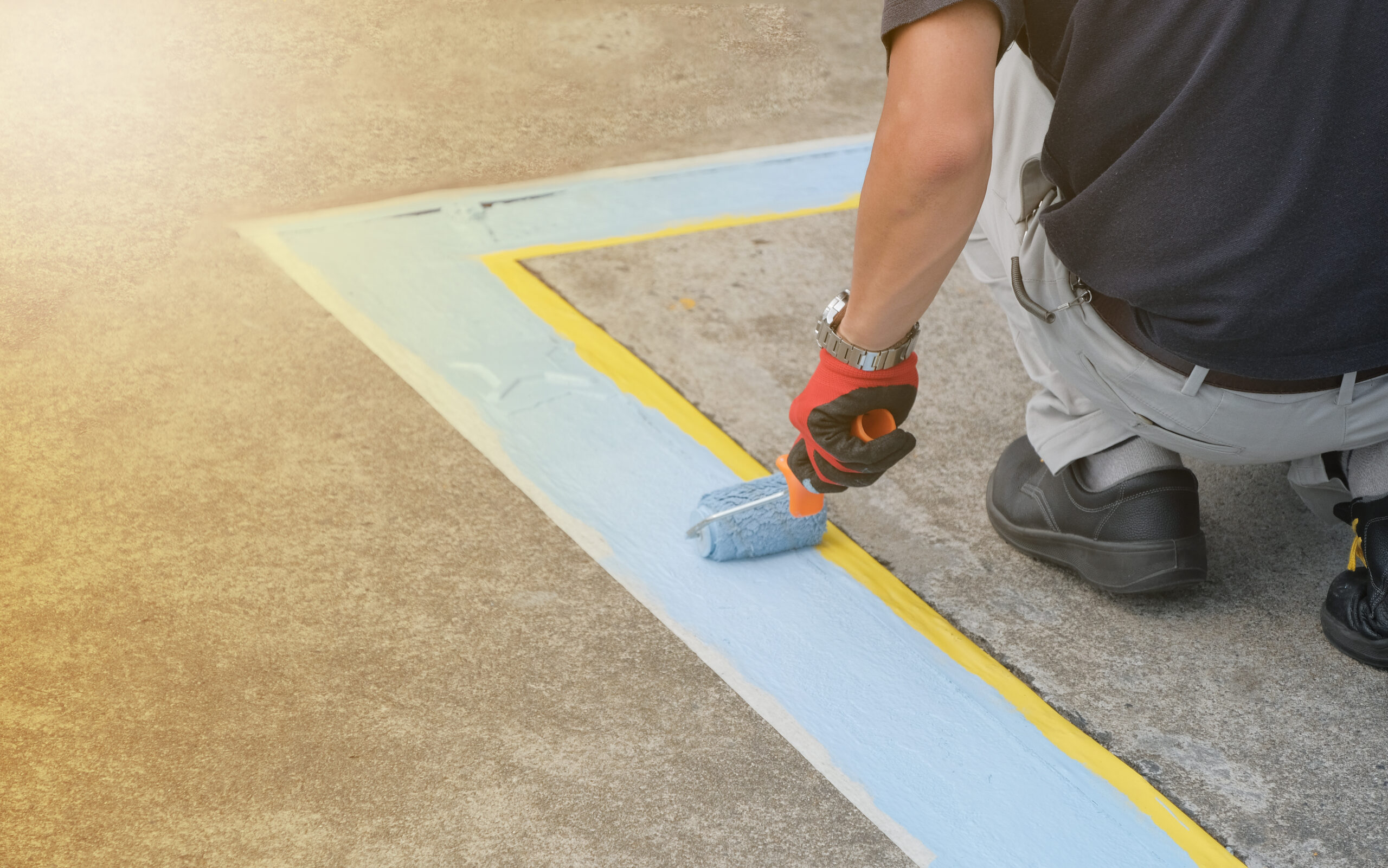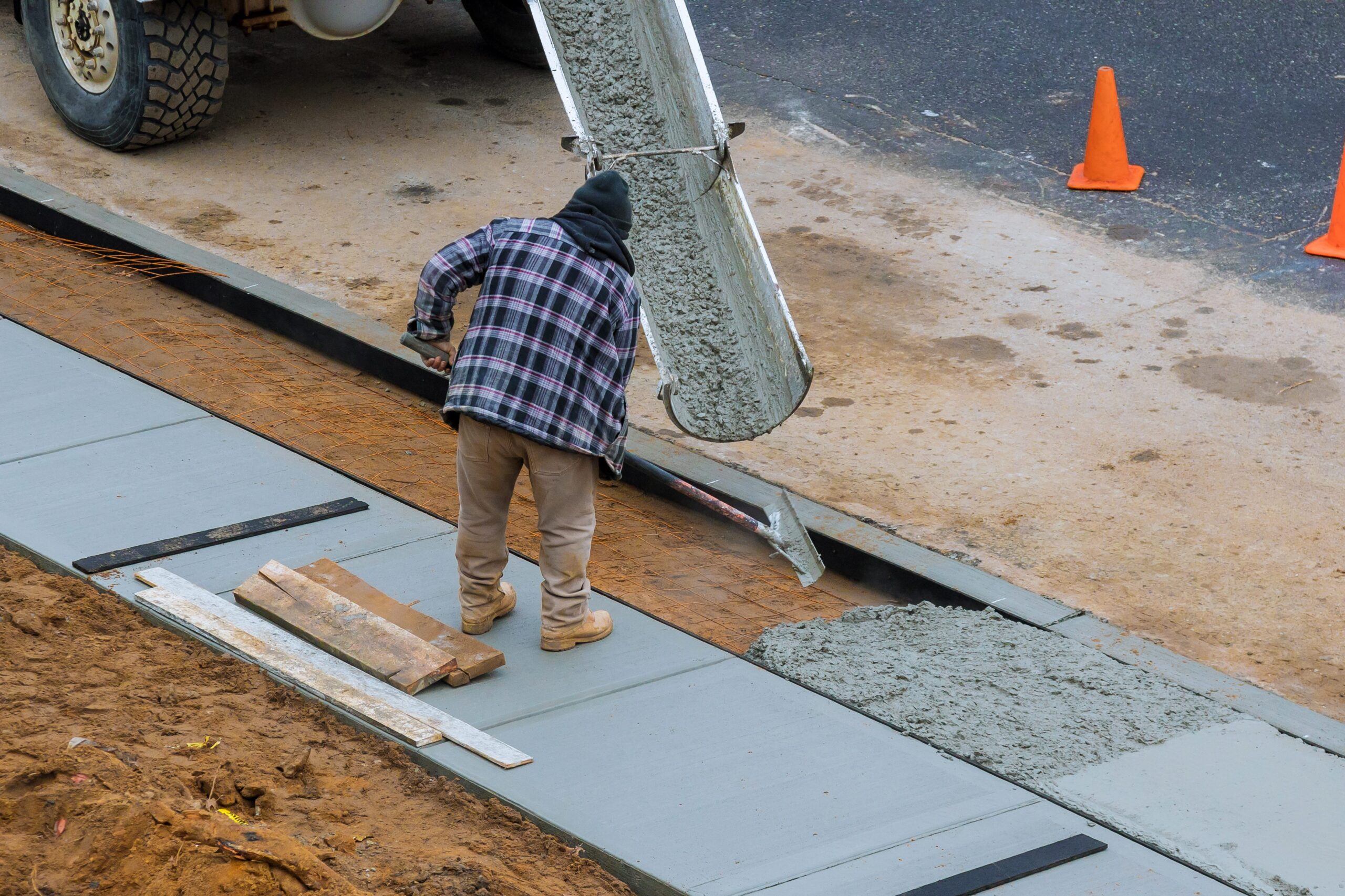Parking lots and roadways are more than just functional spaces for vehicles. They are also critical areas where safety, accessibility, and compliance must be maintained. One key element in achieving this is proper striping. Clear, visible striping ensures that drivers and pedestrians understand traffic flow, parking boundaries, and accessibility features. However, when striping fades, it does not only affect the appearance of a property, it creates significant safety hazards and opens the door to costly liability lawsuits.

According to the Federal Highway Administration, pavement markings are a fundamental part of roadway safety, directly influencing driver behavior and accident prevention. This blog explores how faded striping increases legal risks, what regulations govern pavement markings, and the preventive measures property owners can adopt.
Legal Responsibilities of Property Owners
Property owners and managers are legally responsible for maintaining safe conditions on their premises. A parking lot or roadway with faded striping can quickly be deemed unsafe because it creates confusion for drivers and pedestrians. Courts often apply premises liability laws, which hold property owners accountable for preventable hazards.
Key reasons faded striping creates liability risks:
- Driver confusion : unclear markings can cause accidents.
- Pedestrian danger : crosswalks that fade are hazardous.
- Accessibility violations : ADA-required markings must remain visible.
- Insurance complications : insurers may deny claims if negligence is proven.
Legal obligations are reinforced by standards such as:
- Manual on Uniform Traffic Control Devices (MUTCD) : outlines pavement marking requirements.
- ADA Title III Regulations : mandates visible handicap parking spaces and access aisles.
- State and municipal codes that govern parking layout and safety.
If striping is neglected, the result is the same kind of risk seen with poorly maintained sidewalks that hurt business safety.
Common Lawsuits from Faded Striping
When striping fades, lawsuits often emerge from accidents or violations tied directly to unclear markings.
Types of lawsuits property owners may face:
- Slip-and-fall claims : pedestrians tripping where faded lines fail to designate walkways.
- Vehicle collisions : accidents caused by poorly visible lane dividers or parking spaces.
- ADA non-compliance lawsuits : disabled individuals unable to identify accessible parking spots.
- Wrongful injury suits : where faded crosswalks cause pedestrian injuries.
A case study from the National Center for State Courts (NCSC) highlights how lack of clear markings often results in disputes over negligence. For instance, if a pedestrian is hit in a lot without visible crosswalks, the property owner may bear responsibility even if the driver was careless.
ADA Compliance and Accessibility Issues
The Americans with Disabilities Act (ADA) requires clear, visible striping to ensure accessibility for people with disabilities. Faded markings in parking lots are among the most common violations that lead to lawsuits and government fines.
Key ADA striping requirements include:
- Clearly marked accessible parking spaces with signage and visible paint.
- Properly dimensioned access aisles with non-faded striping.
- Path of travel markings ensuring disabled individuals can safely navigate.
- Routine maintenance to ensure lines remain visible in all weather conditions.
The U.S. Access Board emphasizes that non-compliance can result in complaints, Department of Justice investigations, and fines reaching tens of thousands of dollars.
Insurance Coverage and Liability Gaps
Property owners often assume insurance will cover incidents arising from parking lot accidents. However, when faded striping contributes to a claim, insurers may deny coverage, citing negligence in maintenance.
Why insurance may not protect you:
- Negligence exclusion : most policies exclude preventable hazards.
- Reduced payout : settlements lowered if property owners ignored warnings.
- Higher premiums : repeat claims lead to costly insurance increases.
According to the Insurance Information Institute, insurers investigate claims thoroughly, and lack of visible striping is often seen as failure to uphold duty of care.
Industry Standards for Pavement Markings

Maintaining striping is not just a best practice, it is codified in industry standards that property owners are expected to follow.
- Federal Highway Administration: minimum retroreflectivity standards for pavement markings.
- National Cooperative Highway Research Program: research-based recommendations on durability.
- American Concrete Institute: specifications for surface preparation and marking adhesion.
- Local building codes that specify re-striping intervals.
Industry benchmarks often recommend repainting every 12–24 months. In high-traffic lots, more frequent re-striping is necessary to remain compliant and avoid the same hazards described in common parking lot issues and how to fix them.
Pedestrian and Driver Safety Risks
Faded striping jeopardizes both pedestrian and driver safety, often resulting in preventable accidents.
Critical safety risks include:
- Crosswalk hazards : pedestrians cannot identify safe crossing zones.
- Parking lot chaos : vehicles park irregularly, reducing capacity and order.
- Emergency access issues : unclear fire lanes can delay emergency response.
- Nighttime visibility : faded lines disappear under low light, increasing collisions.
Research from the National Safety Council shows that unclear pavement markings are linked to higher accident rates in both parking areas and roadways.
Preventive Measures for Property Owners
Preventing faded striping-related liability is a matter of consistent maintenance and compliance.
- Routine inspections : check striping visibility quarterly.
- Professional re-striping : hire contractors familiar with MUTCD and ADA rules.
- Durable materials : use thermoplastic or epoxy coatings for longer-lasting results.
- Weather considerations : schedule striping during optimal conditions for longevity.
- Documentation : maintain records of inspections and repainting as proof of diligence.
The Occupational Safety and Health Administration emphasizes that clear pedestrian pathways and markings reduce workplace and public hazards. By implementing preventive measures, property owners safeguard themselves against legal and financial exposure.
Role of Professional Striping Contractors
While some property owners attempt DIY striping, professional contractors provide expertise that minimizes liability risk.
- Knowledge of codes : compliance with ADA, MUTCD, and local laws.
- High-quality materials : better durability compared to standard paint.
- Precision equipment : ensures accuracy in line spacing and thickness.
- Warranty options : professional guarantees reduce long-term costs.
Financial Impact of Neglected Striping
Neglecting striping is far costlier than routine maintenance.
- Legal settlements : lawsuits can exceed hundreds of thousands in damages.
- Fines : ADA and municipal penalties can accumulate quickly.
- Insurance hikes : premiums increase after claims.
- Lost reputation : unsafe lots discourage customers and tenants.
A Small Business Administration report emphasizes that preventable lawsuits and safety violations can severely strain small and mid-sized businesses. Investing in routine striping is a fraction of the cost compared to litigation or regulatory penalties.
Protect Safety, Stay Compliant, and Avoid Liability
Faded striping is more than a cosmetic issue—it is a direct pathway to liability lawsuits, ADA violations, and preventable accidents. Property owners and managers have a clear legal and ethical duty to maintain visible, compliant pavement markings. From ensuring pedestrian safety to avoiding denied insurance claims, the costs of neglect far outweigh the expense of routine maintenance.

By following industry standards, hiring professional contractors, and keeping up with ADA and MUTCD requirements, property owners not only protect themselves legally but also demonstrate a commitment to safety and accessibility. In today’s litigious environment, visible striping is not optional, it is essential for liability prevention and peace of mind.
Ensure your property meets compliance and safety standards with expert pavement striping services from Asphalt Coatings Company. Contact us today for a consultation and protect your investment.
Frequently Asked Questions
Why Is Faded Striping a Liability Risk?
Faded lines cause confusion for drivers and pedestrians, increasing the likelihood of accidents and injuries, which can lead to lawsuits.
Can Property Owners Be Sued for Faded Striping?
Yes, property owners can be held liable if poor striping contributes to accidents or violates safety regulations, such as the ADA.
How Does Faded Striping Affect ADA Compliance?
Fading or missing ADA markings can result in costly fines and lawsuits for failing to provide accessible and compliant facilities.
How Often Should Striping Be Maintained?
Striping should typically be refreshed every 1 to 2 years, depending on traffic, weather, and paint quality, to maintain visibility and compliance.
What Can Property Owners Do to Reduce Liability From Faded Striping?
Regular inspections, timely repainting with durable materials, and hiring professionals to ensure compliance and clarity help reduce legal risks.



